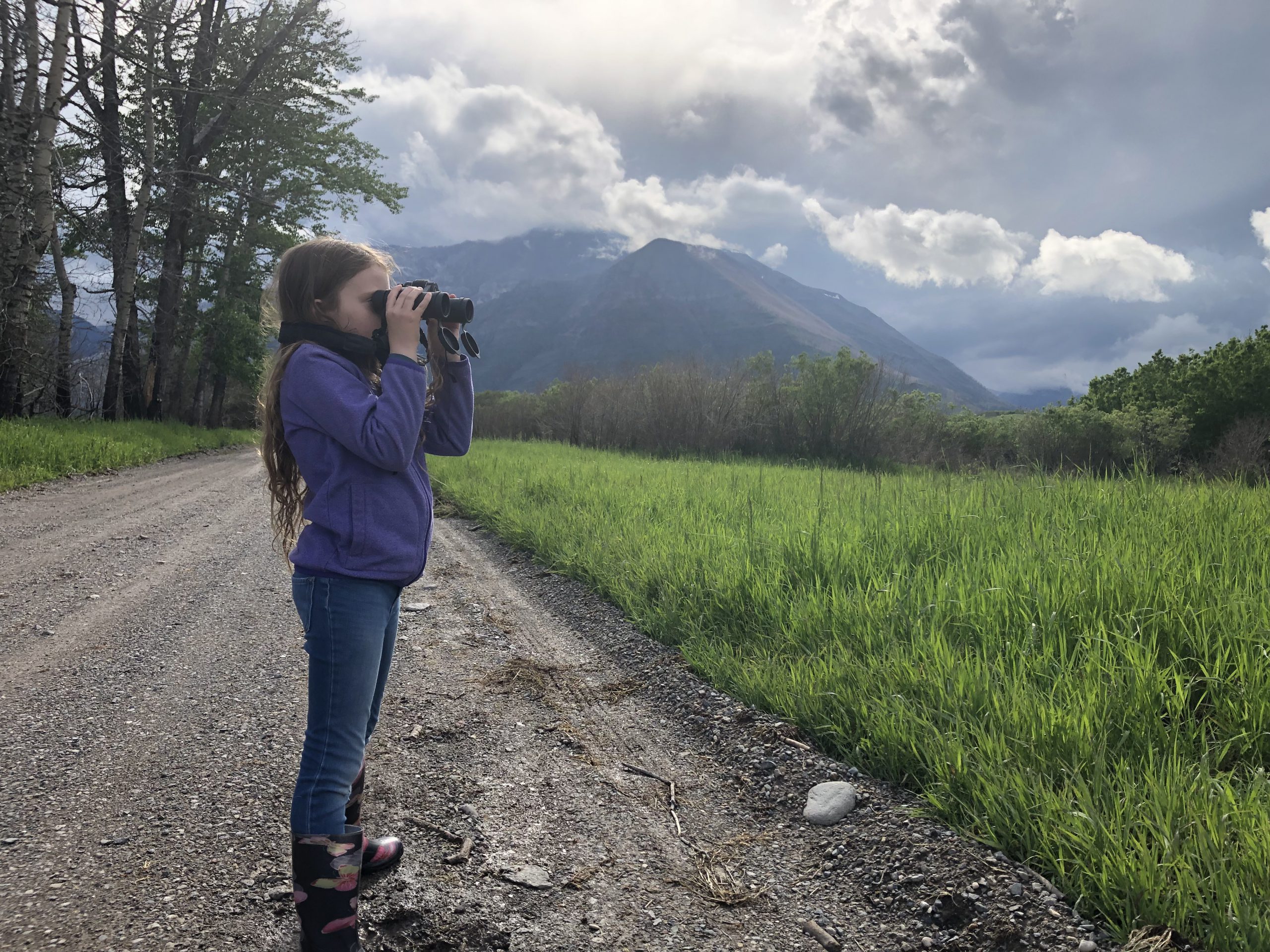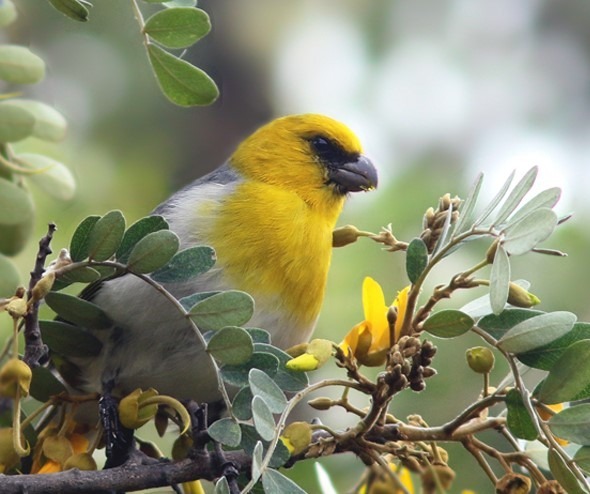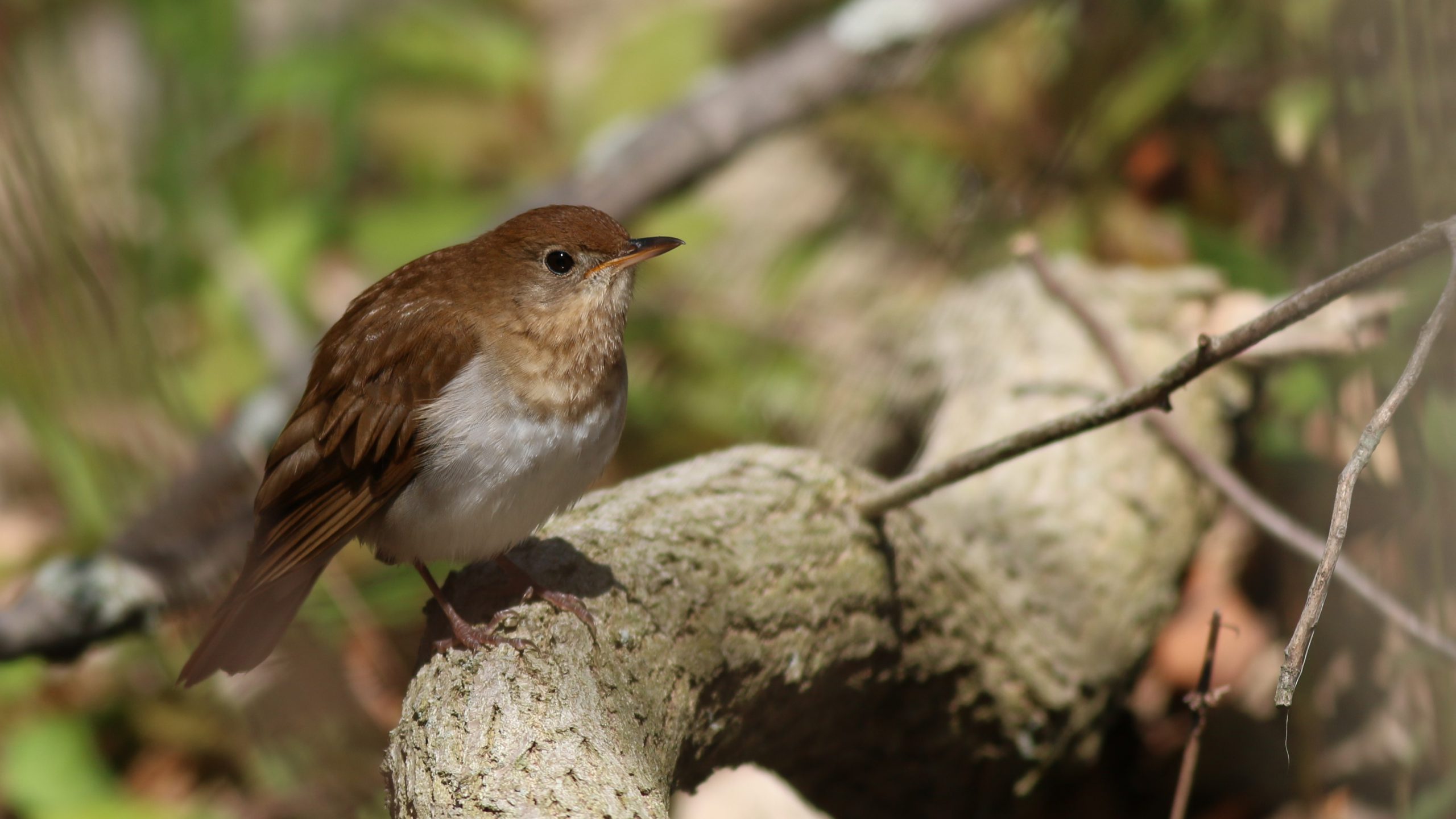By Jody Allair, Director of Citizen Science and Community Engagement, Birds Canada
*Revised from the original 20 March version on 6 April 2020.
“In the robin is a beginning for all those who would like to listen, for those who would hear the nuances of birdsong all around them” – Donald Kroodsma, The Singing Life of Birds (2005)
For me, birding has always been a dual-purpose pursuit, both escapism and a way to build connections to nature with the people who share my passion. As I write, social and physical distancing is becoming the new normal for almost everything we do, and is likely to remain so for the next few months. I am motivated more than ever to spend time outside birding and taking in all that nature has to offer, which now means spending time predominantly in the backyard. As a father of a nine-year-old daughter, I’m focused on getting us outside – to watch birds, but also to help us work through the stress and anxiety that COVID-19 has placed on all of us.
Seeing the joy on my daughter’s face when feeding Black-capped Chickadees (click on links to hear the songs), or finding a Mule Deer in our local forest, or seeing a Pileated Woodpecker up close is an important reminder of what time in nature can do for our well-being. Nature can be a salve for our soul.
I often use the phrase “birds are magic.” As hyperbolic as that may sound, I feel that it’s true. And with spring now making its entrance, we can experience one of the great joys of the natural world, the return of birdsong.

The author’s daughter birding at Waterton Lakes National Park, AB Photo. Jody Allair
Several bird species, such as the White-winged Crossbill, can sing at any time of year. However, the vast majority of songbirds sing in the spring, either after returning from migration or, for resident birds, when the days get warm and long enough to inspire thoughts of nesting. Birds sing for a variety of reasons, first and foremost to establish territories and attract mates. Here in Canada, singing is often conducted by the male. But, recent research is showing that females sing more frequently than previously assumed.
As a lifelong birder, I have been enamoured with birdsong from the beginning of my bird journey. The haunting call of a Common Loon evokes memories of my childhood summers on Crowe Lake in Ontario, the calls of the Northern Saw-whet Owl trigger countless memories of late-night owl banding at Long Point and Thunder Cape Bird Observatory. On a trip to the Ecuadorian Amazon last February, I was able to hear the otherworldly call of the Screaming Piha – one of the most impressive animal sounds in the world, and one that I had always wanted to hear.
I believe that the sounds of birds singing are important to most people, not just those of us who are self-described birders. An example from Hawaii – a place near and dear to me – lends credence to this. There, the native forest birds sing all day long. However, since the 18th century, the Hawaiian Islands have suffered greatly as a result of introduced species, including disease-carrying mosquitoes. Mosquito-borne avian malaria and pox have been particularly devastating to the native songbird populations. Since mosquitoes were introduced, native songbirds have disappeared from areas below the “malaria line” (the range limit for mosquitoes at approximately 4500 feet in elevation). Citizens of Hawaii living below this line in the early 20th century found the loss of birdlife and of birdsong, especially, too much to bear. Thus, the Hui Manu Society was formed in the late 1920s with the goal of introducing “colourful and/or melodious songbirds to the islands for aesthetic purposes” in order to fill the now “silent gardens” with birdsong (For more on this story, search online for “The Birds of the Hawaiian Islands: Occurrence, History, Distribution, and Status” by Robert L. Pyle and Peter Pyle.). While we hope no one in modern times would resort to introducing new species to an island ecosystem, this example reminds us of the importance of maintaining bird populations, and speaks to the value that birds hold for us beyond their ecological functions.

Native Hawaiian honeycreeper, the Palila Photo: Jared Clarke
With the challenges we are currently facing comes an opportunity to connect with birds and the natural world on your own, or even better, with your family. The return of the birds and their songs makes it even more appealing for us to get outside and learn. So where should you start? Well the answer these days is simple – our backyards and balconies will, for the foreseeable future, be our outdoor habitat. Luckily, backyards and balconies can be excellent places to start learning your most common birds.
Learning to identify birds by their songs takes some time, studying, and practice, but the reward is worth it. It will help you find and identify more birds, and it might even open up a world around you that didn’t know existed. The good news is that you probably already know quite a few bird songs. Black-capped Chickadee, American Robin, Canada Goose… you’re not starting from scratch. In fact, I would encourage you to spend more time consciously listening to the sounds of common birds. You will learn a lot about species in your neck of the woods and it will help you pick out strange and unfamiliar bird sounds.
Another piece of advice, handed down to me as a young birder by one of my amazing birding mentors, is to track down the source of any new or strange bird sound. There’s no better way to connect a bird with its song, and going through this exercise will help you retain the information.
There are great resources available for those who wish to take on the fun challenge of learning birdsongs. One I recommend is the Larkwire game-based learning system, which you can use as an iOS app or on your browser. If you’d like to know what birds can be found in your area at any time of year, check out the free online Birds in your Region photo ID guide under the “Discover” tab at birdscanada.org. This printable resource is excellent for kids and families. The free Merlin Bird ID app is another reliable aid for identifying birds and it has audio recordings of most species you’re likely to encounter.
Good luck and good birding! As for me, I’ll be exploring my local patch with my daughter, listening to the rejuvenated House Finches and waiting for the descending flute-like song of the Veery to once again echo across the river.


